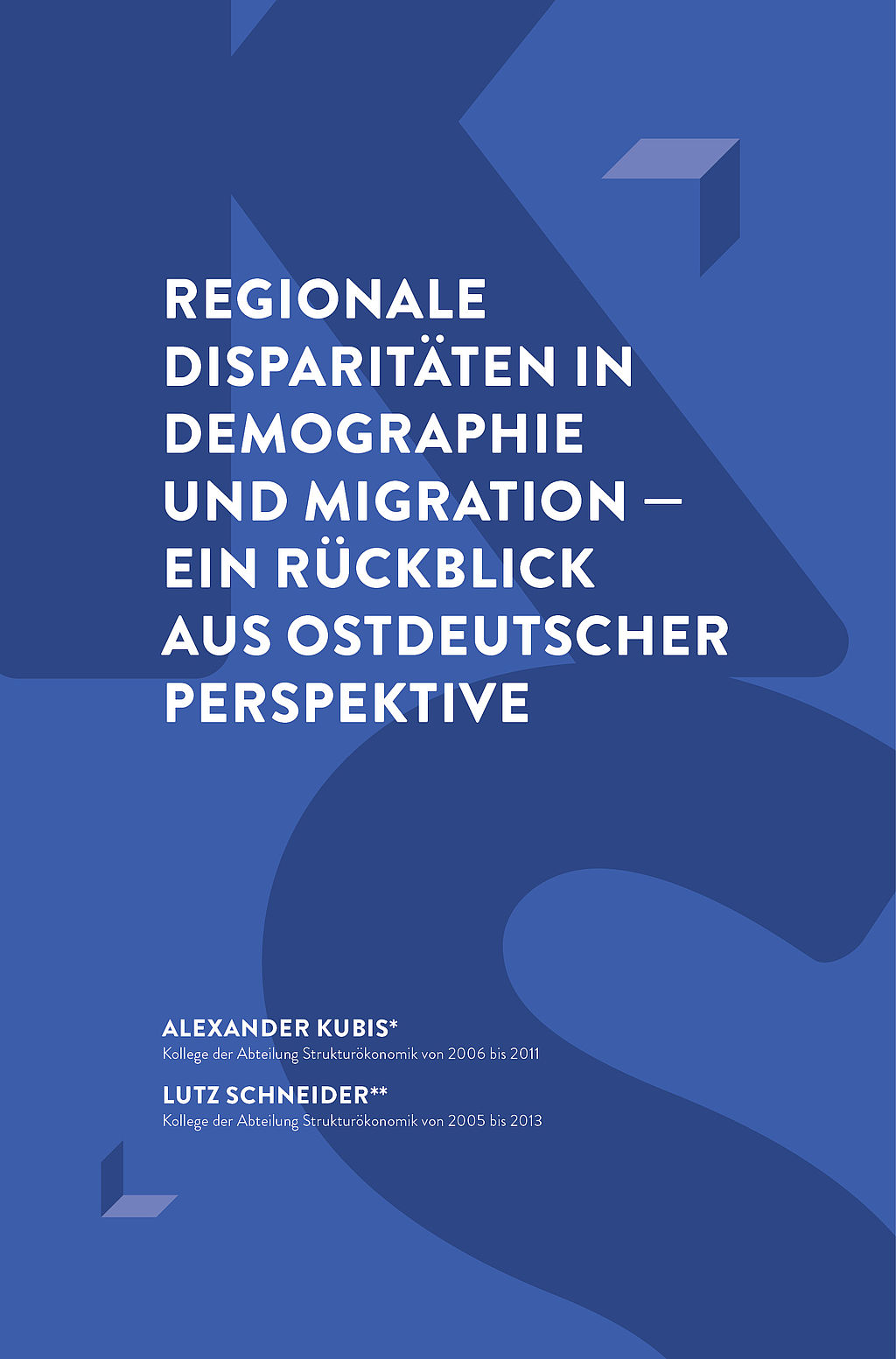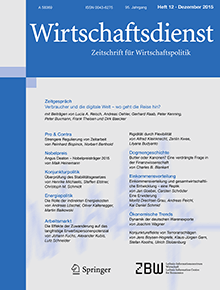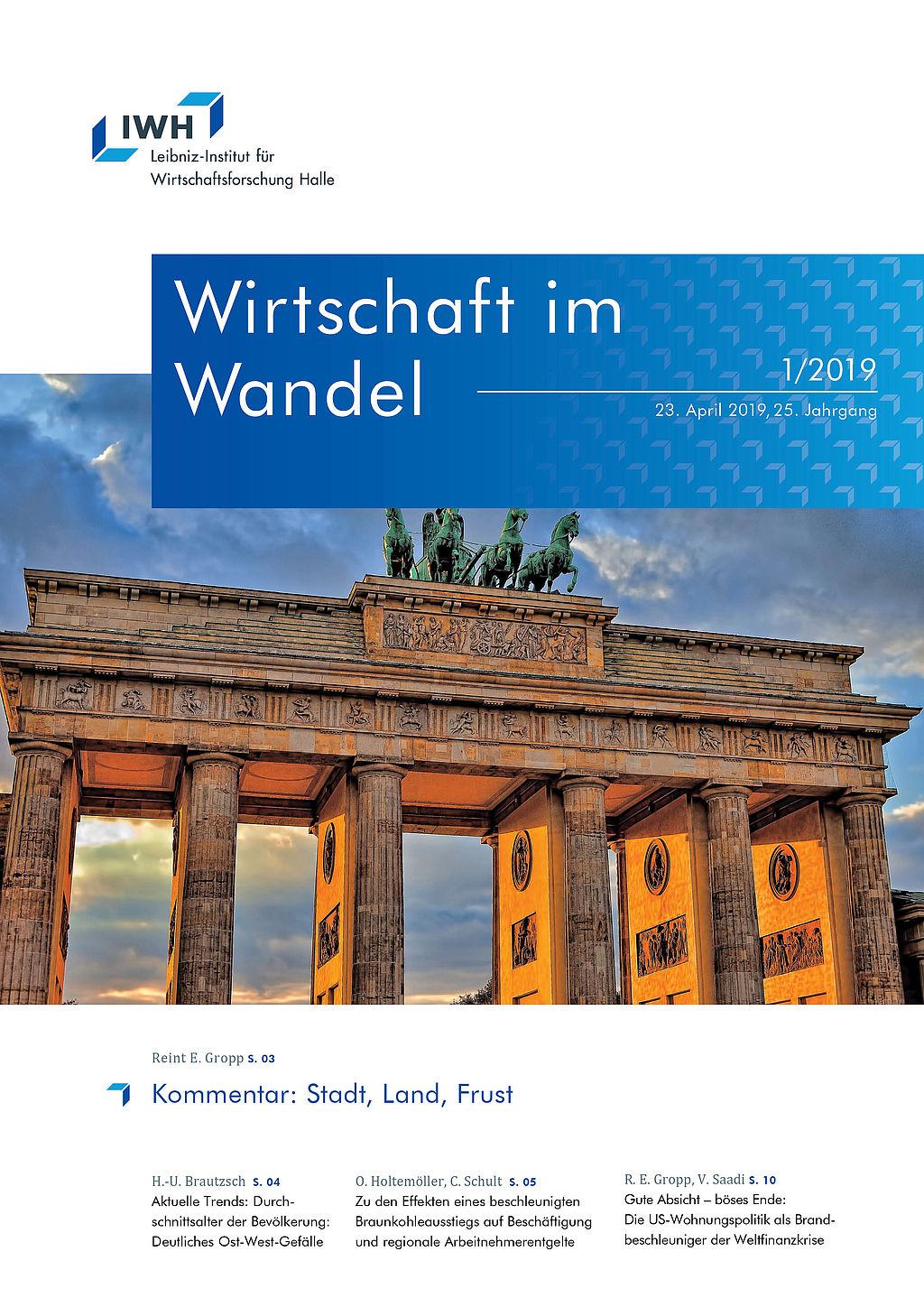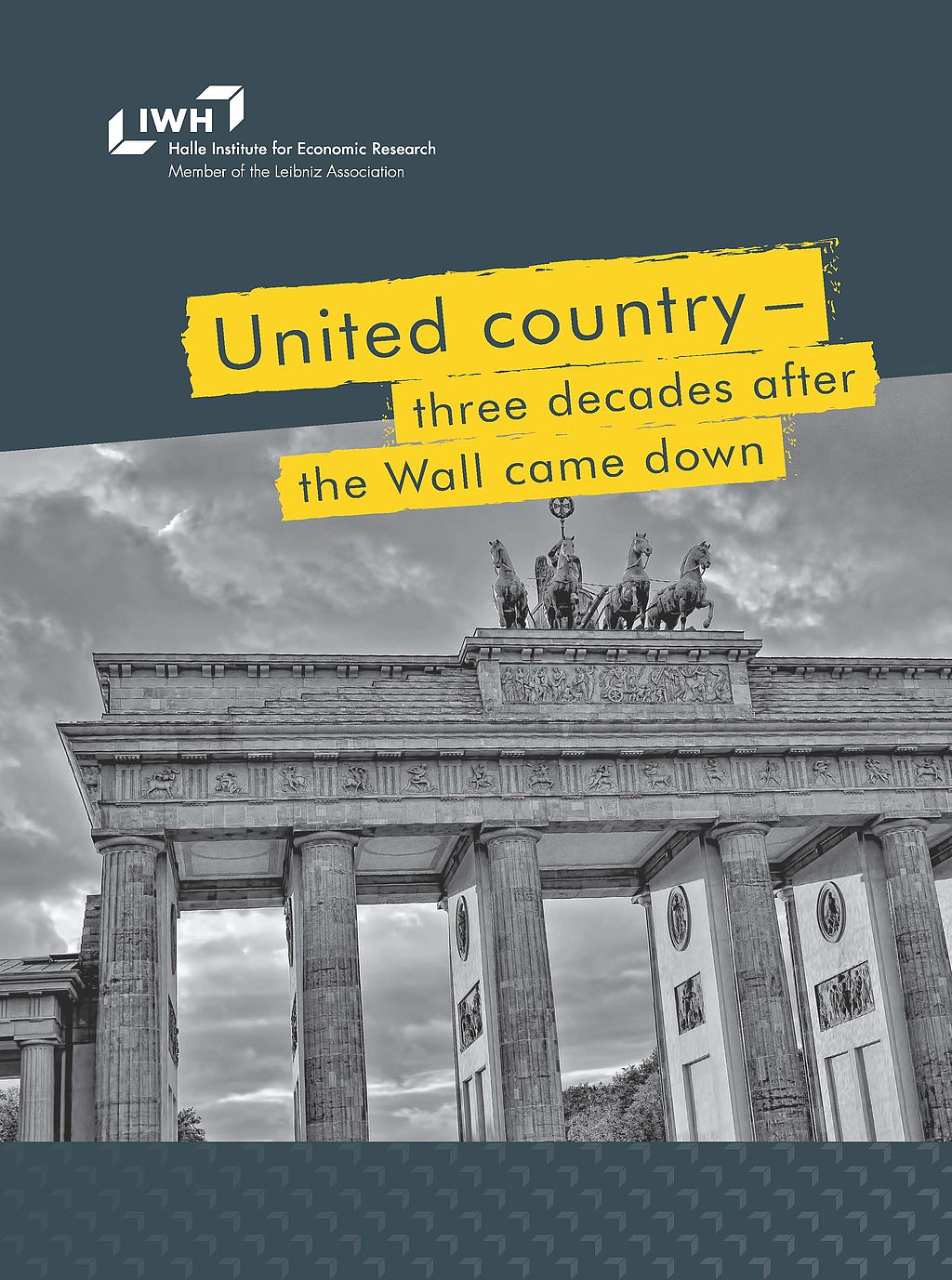Demographic Change
Dossier

In a nutshell
Many thousands of refugees flocked to EU member states in 2015 and 2016, especially to Germany. As has been widely and controversially discussed. The much more serious and longer-term problem of demographic change has been adeptly sidestepped, however. Although it may sound unpopular to some: immigration is vital for Germany, as there is no other way to offset demographic change. This is because the population is constantly ageing and neither the labour market, municipal infrastructure investments, nor the German pension system are currently adequately prepared.
Our Expert

President
If you have any further questions please contact me.
+49 345 7753-700 Request per E-MailAll experts, press releases, publications and events on "Demographic Change"
Europe's century-long task
The increasingly ageing population is already high on the political agenda and will pose a major challenge for the next generation. If things remain as they are, today's children will have to pay much higher pension contributions than their parents and grandparents – and receive considerably less money in return when they are old. Although demographic change is considered when adjusting pensions, this is not sufficient to prevent the scenario just described. There are certainly alternatives, however, to the existing system. For instance, pension levels at retirement age could be fixed at current levels, or even slightly higher, and the pensions of those who have already retired only be increased in line with inflation. Living standards would therefore be maintained. On the other hand, people's work-life balance must be improved, so that couples are not afraid to have children. Almost 10 years ago, the IWH determined that women only continue to work part time after having children, particularly in western Germany.
Germany's towns are also paying too little attention to demographic change and thus the future. They primarily make investments based on the current financial situation and too little on how the population will develop in future. If towns continue to do this, some will be chronically under-funded and others over-funded in 20 years' time.
Another problem is the shortage of skilled workers. In order to make it attractive for well-trained specialists to move to Germany from overseas, a targeted immigration policy is required. The projects launched to date, such as Blue Card, have not been as successful as hoped. So Germany currently remains isolated from the international pool of highly-qualified workers. A points-based system could be a promising alternative.
At the same time, Germany is facing the huge humanitarian dilemma of refugees; the enormous wave of migration since 2015 is placing considerable demands on Europe. The asylum system in Europe still has major shortcomings. A coherent European asylum policy is currently more important than ever, but the refugees have been very unevenly distributed within Europe. The IWH mooted a strategy for their equitable distribution back in 2015, which takes into account both the allocation of people and the costs.
In addition, the state must sustainably manage the integration of newcomers into our culture and labour market. This also includes improving social mobility within our society, in order to provide immigrants with good training opportunities. "Germany has been asleep for the last ten years. We have not seriously considered how we will handle our population development in 15 years' time," says Reint Gropp, President of the IWH in an interview with Mitteldeutsche Zeitung.
Despite the intake of 1.2m refugees over the past two years, Germany’s population suffers a serious decline. Especially in Eastern Germany total population shrinks. According to the OECD, about half of asylum-seekers who started off in eastern Germany in the past moved to places such as Hamburg once they secured their permit.
Whether and how this country can make economic use of the opportunities presented by immigration is currently still under discussion. Integration is a fundamental part of this debate. Due to the complexity of the issue, an interdisciplinary, scientific approach, such as that of the ‘Crises of a globalised world’ Research Group, is essential, in order to understand the reciprocal mechanisms and dynamics. For example, analyses by the IWH show that measures to cope with immigration during late 2015 triggered additional economic impetus. National and regional governments increased their budgets, while spending on housing, food, medical care and general support for refugees fuelled demand and production, especially in the construction and hospitality sectors, as well as in professional services. According to calculations by the Joint Economic Forecast Project Group, migration-related expenditure across Germany contributed 0.1 percent to the growth in gross domestic product in 2015.
Today, one in 113 people in the world is considered to be a refugee – 65 million in total. In order to resolve the complex ‘asylum’ problem, politicians need to be much better organised and ideally develop collective actions. This is the only way to achieve a solution that is as efficient as possible – and above all humanitarian.
Demographic change is profoundly affecting various social spheres, yet is still underestimated by politicians and citizens. Pensions, future investments, migration – all these things are having a direct, immediate impact on people in Germany. Which is precisely why timely, sustainable solutions are required that do not simply pay lip service to sustainability.
Publications on "Demographic Change"

Regionale Disparitäten in Demographie und Migration — Ein Rückblick aus ostdeutscher Perspektive
in: Contribution to IWH Volume, Festschrift für Gerhard Heimpold, IWH 2020
Abstract
Ostdeutschland schrumpft, Westdeutschland wächst. Dieser Eindruck drängt sich aus demographischer Sicht auf, wenn die Bevölkerungsentwicklung seit 1989 betrachtet wird. Lebten auf dem Gebiet der fünf östlichen Bundesländer Ende 1988 noch 15,4 Millionen Personen, so waren es Ende 2018 nur 12,6 Millionen Personen – ein Rückgang um fast drei Millionen Einwohner oder beinahe 20%. Die zehn westlichen Bundesländer wuchsen im selben Zeitraum von 59,6 Millionen auf 66,8 Millionen Einwohner. Der überwiegende Teil dieser unterschiedlichen demographischen Entwicklung ist der räumlichen Umverteilung von Bevölkerung geschuldet, einerseits der Nettobinnenwanderung von Ost- nach Westdeutschland, andererseits der sehr unterschiedlichen Verteilung der Nettoaußenwanderungen. Die Umverteilung der Bevölkerung ist dabei nicht homogen, vielmehr in starkem Maße selektiv – vor allem in den Dimensionen von Ausbildung, Alter, Geschlecht und Nationalität.

East Germany Three Decades After the Wall Came Down: What has Been Achieved and What Should Economic Policy Do?
in: Wirtschaftsdienst, No. 7, 2019
Abstract
The persistent difference in productivity between East and West Germany not only results from the relative absence of large firms based in the East as many believe. Companies of all sizes exhibit an East-West productivity gap. The gap is larger in urban regions. Scarcity of skilled labour has emerged as the new barrier to business development. In order to boost productivity, economic policy should avoid additional subsidies that are conditional on creating jobs. Additionally, the potential of East German urban areas should be better explored. Mitigating the shortage in qualified workers requires in-migration of skilled labour from abroad, supported by an open mindset and environment.

Aktuelle Trends: Durchschnittsalter der Bevölkerung: Deutliches Ost-West-Gefälle
in: Wirtschaft im Wandel, No. 1, 2019
Abstract
Das Durchschnittsalter der Bevölkerung[1] hat in Deutschland kontinuierlich zugenommen. In Ostdeutschland ist es zwischen Ende 1990 und Ende 2017 von 37,9 auf 46,3 Jahre gestiegen.[2] In Westdeutschland nahm das Durchschnittsalter von 39,6 auf 44,1 Jahre zu. Die Zunahme des Durchschnittsalters war damit in Westdeutschland mit 4,5 Jahren nur etwa halb so hoch wie in Ostdeutschland (8,4 Jahre). Beeinflusst wurde diese Entwicklung in Ostdeutschland durch das hohe Geburtendefizit sowie die Wanderungsverluste.

United Country – Three Decades After the Wall Came Down
in: One-off Publications, 2019
Abstract
The Berlin Wall, once the symbol of the divided Germany, has now been gone for longer than it ever existed. But the differences within the country are still visible. However, recent research suggests that different economic development does not always follow the former inner-German border. Apart from the west-east divide, differences also emerge between the south and the north or between the cities and the country.

Mittelfristprojektion des IWH: Wirtschaftsentwicklung und Öffentliche Finanzen 2018 bis 2025
in: Konjunktur aktuell, No. 4, 2018
Abstract
In Deutschland wird die Anzahl der Erwerbspersonen mittelfristig aufgrund der Alterung der Bevölkerung sinken und damit auch das Wirtschaftswachstum niedriger ausfallen als in den vergangenen Jahren. Gleichzeitig hat die Bundesregierung eine Reihe von zusätzlichen Staatsausgaben beschlossen. Auf der Grundlage einer gesamtwirtschaftlichen Projektion mit dem IWH-Deutschlandmodell lässt sich aber zeigen, dass es bis zum Jahr 2025 kaum zu Haushaltsdefiziten kommt, auch wenn sämtliche im Koalitionsvertrag enthaltenen finanzpolitischen Maßnahmen umgesetzt werden. Selbst wenn sich die makroökonomischen Rahmenbedingungen verschlechtern, etwa wegen eines deutlichen Zinsanstiegs oder eines Einbruchs der ausländischen Nachfrage, würde der Finanzierungssaldo zwar negativ, die zu erwartenden Defizite lägen aber dennoch wohl unter 0,5% in Relation zum Bruttoinlandspro-dukt. Ein Einbruch der ausländischen Nachfrage würde die Produktion zwar stärker dämpfen als ein Zinsschock, die Effekte auf den gesamtstaatlichen Finanzierungssaldo wären aber vergleichbar. Denn ein Zinsschock belastet eher die Binnennachfrage, von deren Rückgang die staatlichen Einnahmen stärker betroffen sind als von einem Rückgang der Exporte. Für die kommenden Jahre dürfte der deutsche Staatshaushalt damit recht robust sein; dabei ist aber zu beachten, dass etwa die aus dem Rentenpaket resultierenden Mehrausgaben erst nach dem Jahr 2025 deutlich zu Buche schlagen.



